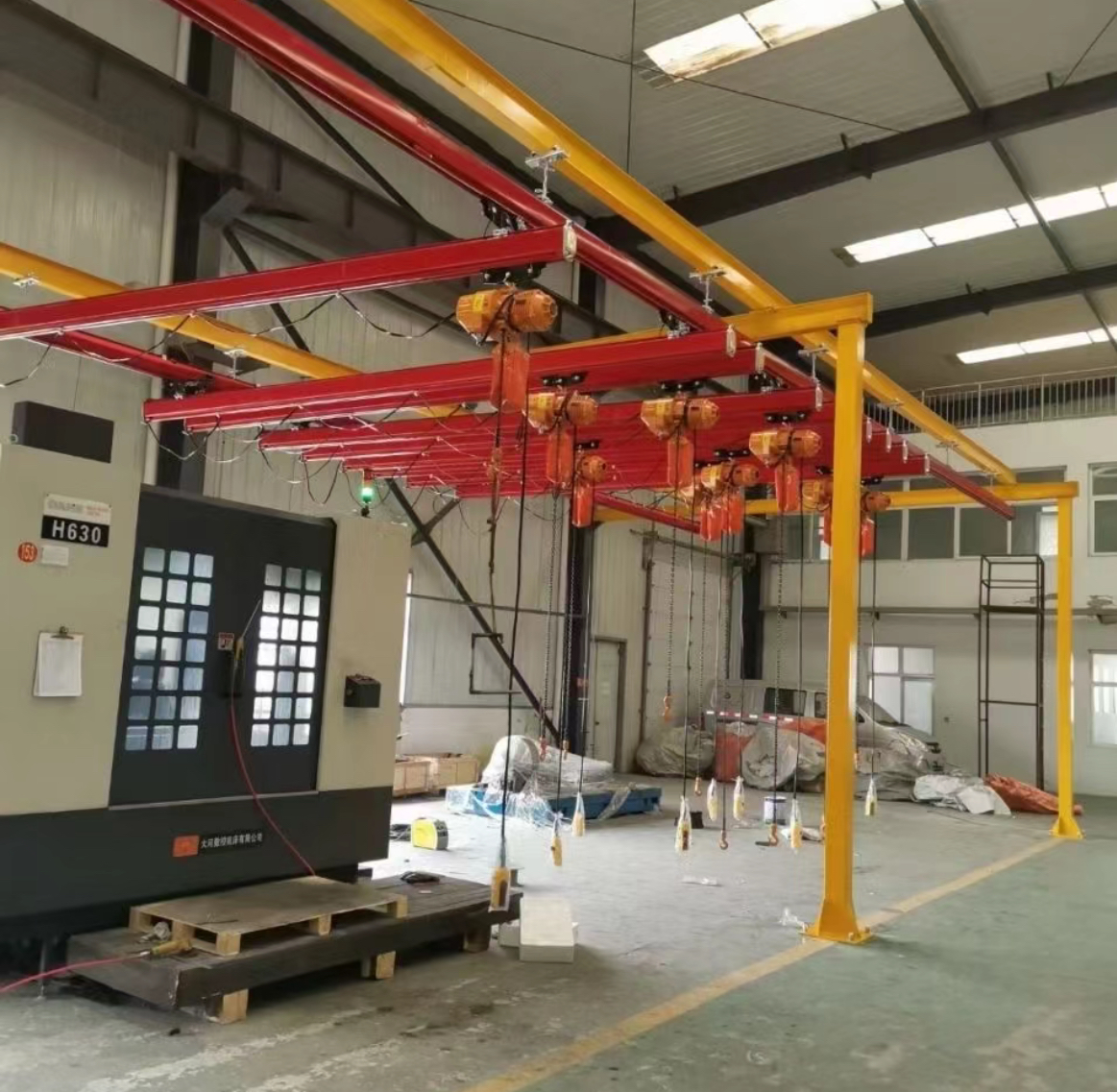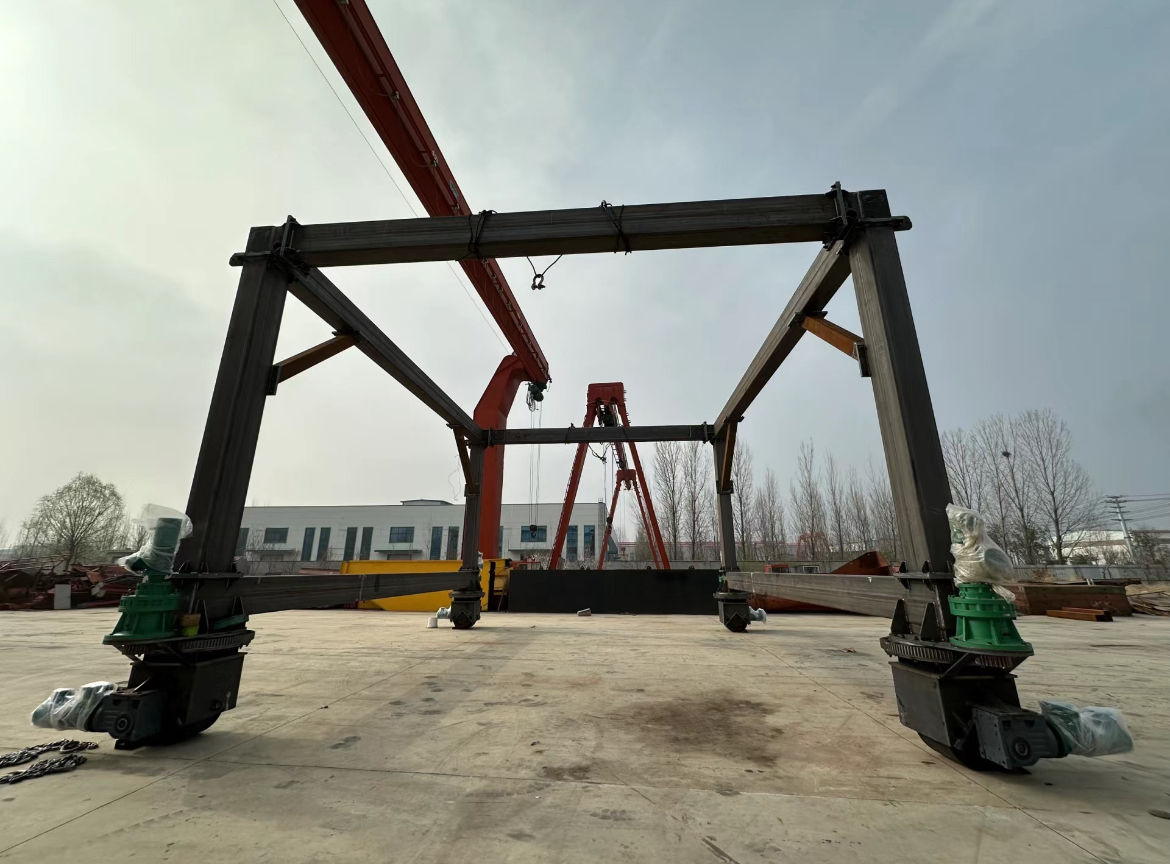What is the difference between a rail-mounted crane and a tire-mounted crane?
1. Walking mode and mobility
The walking mode of the rail crane is to run on the laid track through the bottom walking wheel. The track is generally fixed on the port ground or the dock trestle and other locations, providing a precise running route for the crane. For example, in the container terminal, the track is laid along the front of the dock and the yard, and the crane can only move along these tracks. The mobility is relatively poor, and its operating range is limited by the track. It can only move in areas with tracks and cannot change its route at will to work in other places without tracks. However, within the range of the track, it can locate each operation point more accurately. The tire crane relies on tires to walk on the ground, just like an ordinary car. It has an independent walking drive system, and the movement of the crane is achieved by the rotation of the tires.
The tire crane can travel on various road surfaces (such as concrete pavement, asphalt pavement, etc.) in the port, as long as the road surface can bear the weight of the crane. It has strong mobility and can move freely in the port area without being constrained by fixed tracks. It can quickly transfer from one operation area to another, and even leave the port to work in other suitable sites. However, it may be subject to certain restrictions when traveling on soft soil or uneven roads.

2. Working stability and precision
Rail cranes have high working stability because they run on fixed tracks. The tracks provide solid support for the crane, reducing the shaking and vibration of the crane during operation and operation. When lifting heavy objects, it can better maintain balance, especially when handling large containers or heavy bulk cargo, which can better reflect its stability advantage. The operation accuracy is high. Because of the guiding effect of the track, the crane can accurately locate the target operation position. For example, during the loading and unloading of containers, the container can be accurately placed in the specified position with a small error range, which is conducive to improving the automation degree and loading and unloading efficiency of port operations.
The working stability of tire cranes is relatively weak. The contact between the tire and the ground is elastic, and different road conditions (such as potholes, slopes, etc.) will affect the stability of the crane. When lifting heavy objects, especially on uneven roads or when the heavy objects are lifted eccentrically, the crane may shake or tilt. The operation accuracy is not as good as that of rail cranes. Because tire cranes rely on the driver's operation and some simple positioning devices to determine their position during movement, and do not have the precise guidance of tracks, the positioning accuracy is relatively low during loading and unloading operations, which may cause the placement of the goods to be inaccurate and require more manual intervention to adjust.
3. Structure and carrying capacity
The structure of rail crane is relatively complex. In addition to the lifting, luffing, slewing and other mechanisms, there are also special travel mechanisms to match the track. The travel mechanism includes travel wheels, drive motors, reducers, track cleaning devices and other components. The overall structural design focuses more on the smooth operation and carrying capacity on the track. Generally, the carrying capacity is large and can handle heavier goods. Due to its stable structure and the support of the track, large rail cranes can easily lift hundreds of tons of weight, which is suitable for container loading and unloading of large ships and lifting of heavy bulk cargo.
The structure of tire crane is relatively simple. It is mainly composed of chassis (including tires, frames, etc.) and upper parts (including crane arms, lifting mechanisms, slewing mechanisms, etc.). Because there is no need for complex travel mechanisms that cooperate with the track, the overall structure is relatively compact. The carrying capacity is relatively small. Generally, the lifting weight of tire cranes is within tens of tons, which is mainly limited by factors such as the carrying capacity of tires and the stability of the vehicle chassis. However, for the loading and unloading of some small and medium-weight goods and short-distance lifting in ports, it can meet the needs well.

4. Application Scenarios and Costs
Rail cranes are mainly used in container terminals and large bulk terminals in large ports. At container terminals, they efficiently load, unload and transfer containers between the front of the terminal and the yard along the track; at bulk terminals, they are used to load and unload heavy bulk cargo such as coal and ore. The initial cost is high. On the one hand, the manufacturing cost of the crane itself is high because of its complex structure and large load-bearing capacity requirements; on the other hand, the laying of the track requires a large amount of capital investment, including track materials, infrastructure, installation and commissioning costs. However, its service life is long and the long-term operating cost is relatively stable.
The application scenarios of tire cranes are relatively flexible. They are suitable for loading and unloading small and medium-sized goods in ports, short-distance lifting in terminals, stacking of goods in warehouses, and some temporary lifting tasks. For example, loading and unloading small equipment in the warehouse area of the port, loading and unloading goods for small ships at the terminal, etc. The initial cost is relatively low. Because of its simple structure, the manufacturing cost is not high, and no additional infrastructure investment such as laying tracks is required. However, its maintenance cost may be relatively high due to factors such as tire wear and chassis maintenance, and fuel consumption during operation is also a cost.

